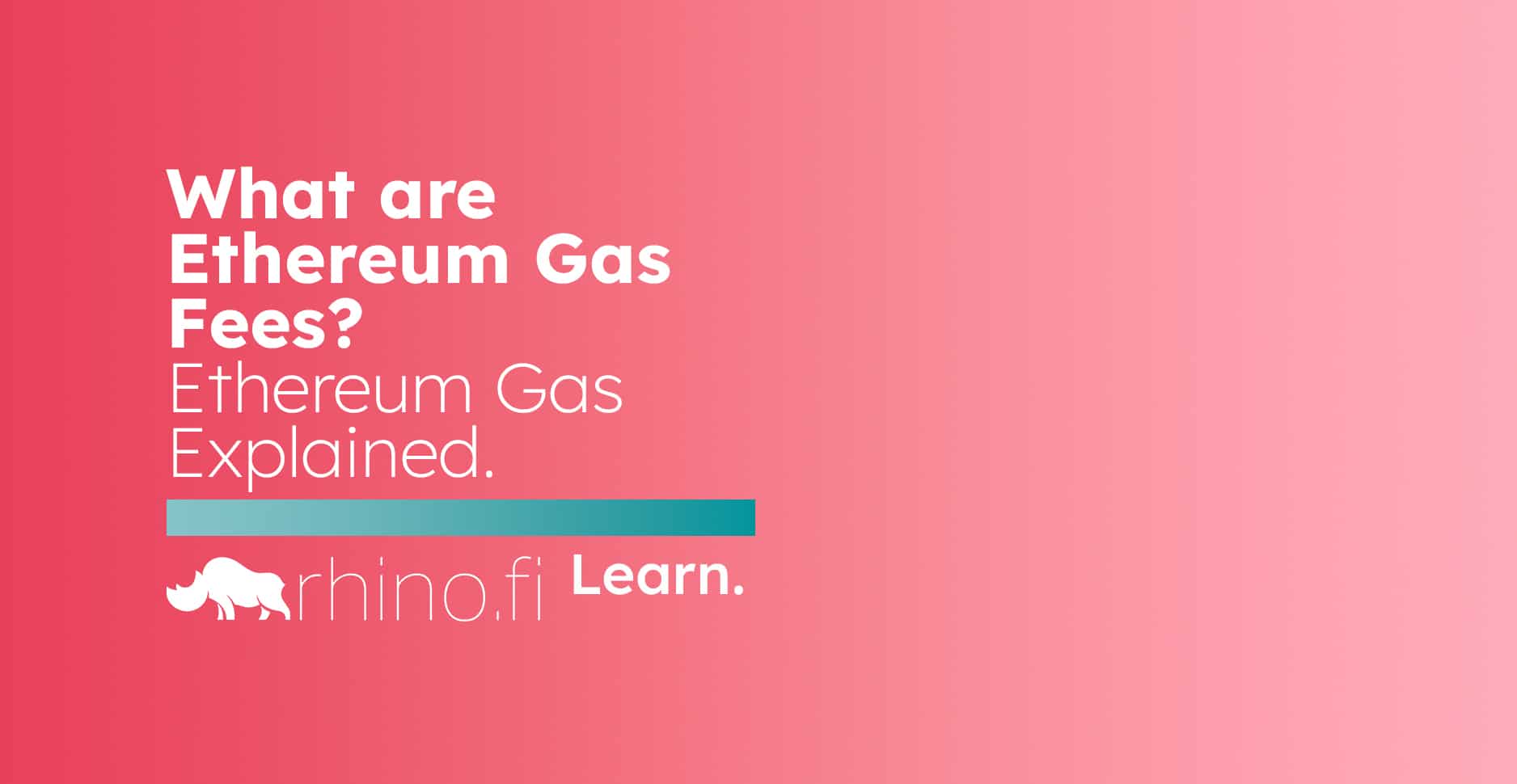Gas fees are an all-too-common topic within the crypto ecosystem.
You may have seen people complaining about how high the fees are for transactions on the Ethereum blockchain, or may have even experienced the problem for yourself.
But what is ‘gas’ and what are these so-called ‘gas fees’? In this edition of RhinoLearn, we’re going to dive in and take a look.
What is gas?
The term ‘gas’ is a unit that describes the amount of computational power required to perform a specific task on the Ethereum blockchain. This could be swapping two tokens, minting a new NFT, or simply moving tokens from one wallet to another.
Different actions within the Ethereum blockchain have specific gas costs. For example, transferring tokens between wallets may cost 1000 gas (an arbitrary figure for this example).
If you’ve read our explainer, you’ll know that a smart contract will contain multiple functions. These could include checking the balance of tokens within a user’s wallet or transferring tokens after a trade.
Each of these actions has a specific cost that adds up, giving a total gas cost to interact with that smart contract.
So why do certain actions cost more than others?
Right, so here we need to make a distinction.
On one hand, you have the cost in gas of each transaction, which is fixed for certain functions.
But on the other, you have the price of gas itself, which goes up and down.
A useful analogy is planning a journey in your car. The vehicle may need 50 litres of petrol to get from point A to B, and that value never changes. But the price of petrol may vary, and thus the journey may be cheaper or more expensive, depending on the day you travel.
Ok, hold up. How is the price of gas measured?
The price of gas is measured in GWEI, a compound word that combines ‘giga’ and ‘wei.’
‘Wei’ is the smallest denomination of Ether (ETH), Ethereum’s flagship currency, and ‘giga’ means it’s been multiplied by a billion.
One wei is worth one quintillionth of 1 ETH, and that’s seriously tiny. In fact, a Gigawei is worth only 0.000000001 ETH. Imagine a tiny fragment of a penny or cent and you’ll get the idea!
Right, back to the main topic… what causes the price of gas to go up and down?
The price of gas, like the price of many things, is dictated by demand. Specifically, it is dictated by the demand for block space on the Ethereum blockchain.
The busier the network, the more people will be wanting their transaction to be included in the next block, and the higher the price will go.
The Ethereum blockchain, as we’ve mentioned a bunch of times on rhino.fi, can get seriously congested, largely because it’s so successful. It houses its own flagship currency and it provides an ecosystem for hundreds of different decentralised apps. This means thousands of users and millions of transactions.
At ‘rush hour’ times, the price of gas can skyrocket.
Can you give me a practical example of this?
Ok, let’s say you want to complete a transaction that costs 1000 gas.
In a low period of demand, the price of gas might be 100 GWEI. This equates to 0.0001 ETH, or US$0.21 in old money (based on current trading values).
So the total value of the transaction (1000 gas at 100 GWEI each) is equivalent to only 21 cents. Pretty cheap, right?
But in a busy period, the price of gas might go up to 10,000 GWEI. Suddenly, the total value of the transaction, in ‘traditional’ terms, has shot up to 0.01 ETH or $21. Now, it’s starting to look pretty costly.
These sort of jumps are pretty common. In fact, at peak times it’s not unusual to have to pay hundreds of dollars’ worth of gas fees for a transaction that’s worth only a few bucks, and this is causing some serious issues for Ethereum users.
So, to summarise the gas fee problem:
- Every transaction on the ETH network costs gas.
- Units of gas are priced in GWEI.
- 1 GWEI is equal to 0.000000001 ETH.
- As the demand for the ETH network increases, the price of GWEI increases.
- This, in turn, increases the total fee paid for executing your transaction on the ETH blockchain.
How rhino.fi is tackling the problem of gas fees
rhino.fi is one of a number of projects that have launched on ‘layer 2’. In other words, we sit on top of the layer 1 Ethereum blockchain, which means we are connected to the main network but we can operate independently.
This enables us to take transactions off the main Ethereum blockchain and process them with none of the congestion. So the high gas fees are removed completely.
This will, in turn, make more Ethereum scalable and enable this amazing blockchain to reach its full potential.
Found this edition of RhinoLearn useful? Check out our explainer on layer 2, where we explain how layer 2 works and how it solves Ethereum’s scalability challenges.





